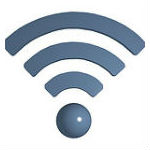 Traditional cellular carriers that provide machine-to-machine connectivity will be seeing some new competition now that the Federal Communications Commission has given Access Spectrum more flexibility in how it uses 2 MHz of spectrum that the company holds in the 700 MHz band known as the upper A block. That’s a considerably narrower spectrum slice than traditional wireless carriers have, and a spokesperson for Access Spectrum said the company does not plan to offer traditional wireless service. Instead the company sees numerous opportunities for a relatively low-speed wireless data network.
Traditional cellular carriers that provide machine-to-machine connectivity will be seeing some new competition now that the Federal Communications Commission has given Access Spectrum more flexibility in how it uses 2 MHz of spectrum that the company holds in the 700 MHz band known as the upper A block. That’s a considerably narrower spectrum slice than traditional wireless carriers have, and a spokesperson for Access Spectrum said the company does not plan to offer traditional wireless service. Instead the company sees numerous opportunities for a relatively low-speed wireless data network.
“The upper 700 MHz A block holds great promise for a number of cutting edge technologies, both those already in use and those just beginning to come to market,” said an Access Spectrum spokesperson in an email to Telecompetitor. Potential uses include secure financial transactions, remote control and monitoring of smart grid equipment, dedicated short messaging apps such as social media posts, and telematics, the spokesperson said.
In addition, the spectrum could be used for “broadcast/beacon applications” such as serving as a control channel for unlicensed wireless networks. That option would seem to have strong appeal as a means of maximizing network performance when multiple users share the same unlicensed spectrum.
The upper A block was originally intended for frequency division duplexing which uses separate spectrum bands for upstream and downstream traffic. But the FCC has now said that the block can be used for time division duplexing (TDD), where upstream and downstream traffic is divided into separate time slots. One advantage of this approach is that it can support asymmetrical traffic flows.
The FCC made the decision to allow TDD to be used in the upper A-block after a field and laboratory tests of TDD equipment from Full Spectrum.
Access Spectrum holds upper A-block licenses throughout two-thirds of the United States. The company spokesman said the company already has a network in place that is used by a statewide utility for remote infrastructure control and monitoring.
As with other relatively low-frequency spectrum, the upper 700 MHz A block should have excellent propagation characteristics, minimizing the number of base stations required to support it and providing good indoor coverage.
Image courtesy of flickr user FutUndBeidl.


